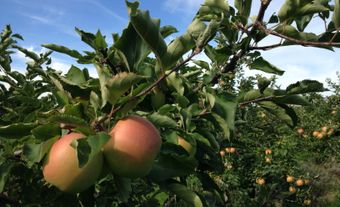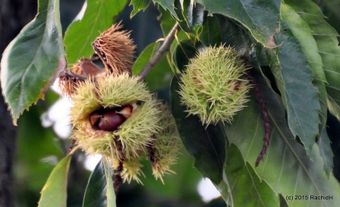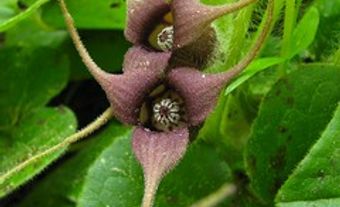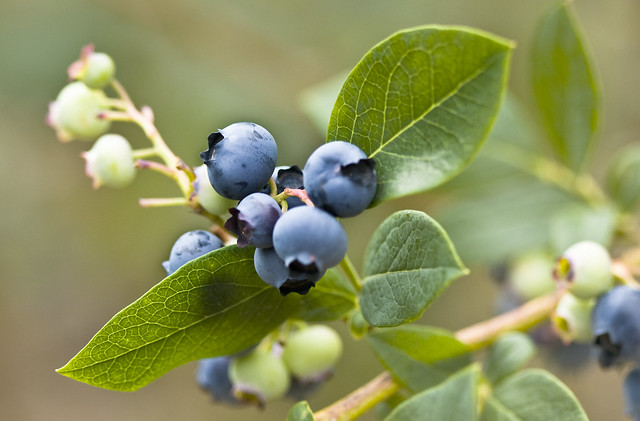
Blackberries

Over 12 species of blackberries grow in woods and clearings in Canada, mainly in eastern provinces and southern British Columbia. They belong to the Rubus genus in the Rosaceae family. They make excellent pies, jams, jellies and wines.
Blueberries, Bilberries, Huckleberries
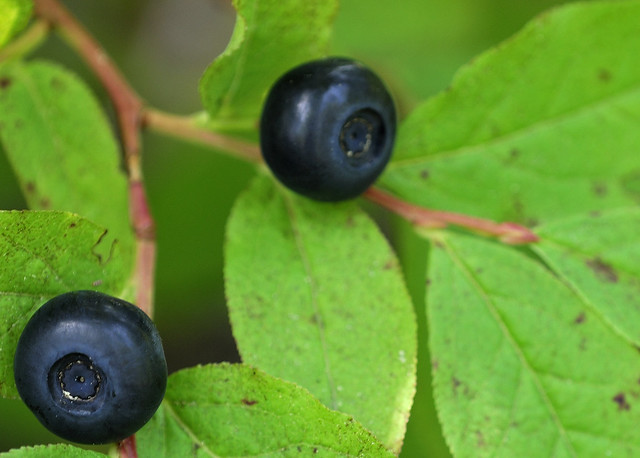
There are some 18 species of blueberries, bilberries and huckleberries in Canada. They belong to the Vaccinium genus in the Ericaceae family and include bog cranberries (discussed below). All are shrubs, with edible fruits which vary in colour from red to blue and black. Cultivated varieties have been developed from wild species.

Buffaloberries

Buffaloberries (genus Shepherdia, family Elaeagnaceae), silver buffaloberry (S. argentea) and russet buffaloberry or soapberry (S. canadensis) are deciduous shrubs with small, reddish orange fruits. In Canada, silver buffaloberries grow mainly on the Prairies, while soapberries grow from coast to coast. The fruits are bitter but good in jelly. Silver buffaloberries were used by Indigenous peoples to flavour buffalo meat. Indigenous peoples in British Columbia whip soapberries with water to make a favourite confection.
Chokecherries
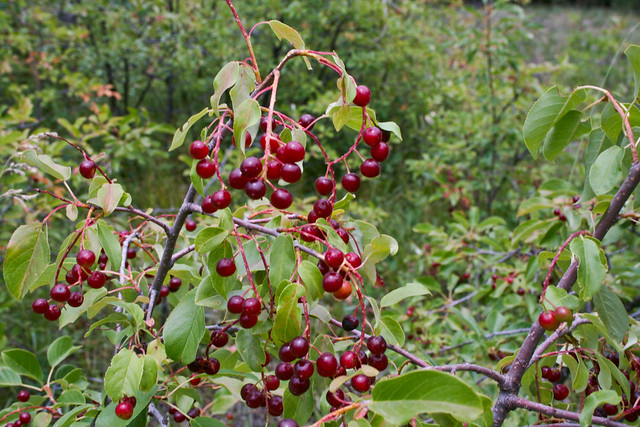
Chokecherries (Prunus virginiana) are shrubs or small trees, and grow across southern Canada. The fruits, ranging from red to black, grow in long clusters. They have large stones and can be bitter, but are excellent in jellies, juices or syrups. Six other species of Prunus (four cherries and two plums) are native to Canada.
Cranberries

Cranberries are low, vine-like perennials that grow in muskeg and peat bogs. Three or four closely related species are found in Canada, belonging to the Vaccinium genus in the Ericaceae family. One of these species is the forerunner of the cultivated cranberry. Lowbush cranberry or lingonberry, (V. vitis-idaea) is related, but has smaller, clustered berries. Highbush cranberries (Viburnum opulus, and V. edule) are tall shrubs with tart, clustered fruits.
Currants
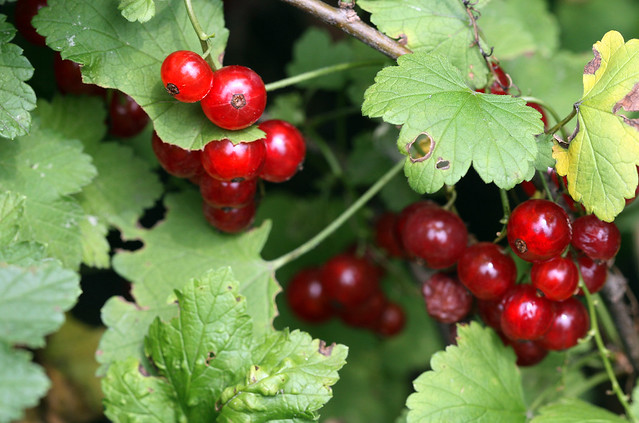
Some 14 species of currants are found in Canada. They belong to the Ribes genus in the Saxifragaceae family or Grossularioideae (gooseberry) sub-family. Many resemble garden varieties and are used similarly. The fruits range from red to bluish to black. Currants do not have spines or prickles, distinguishing them from gooseberries.
Gooseberries
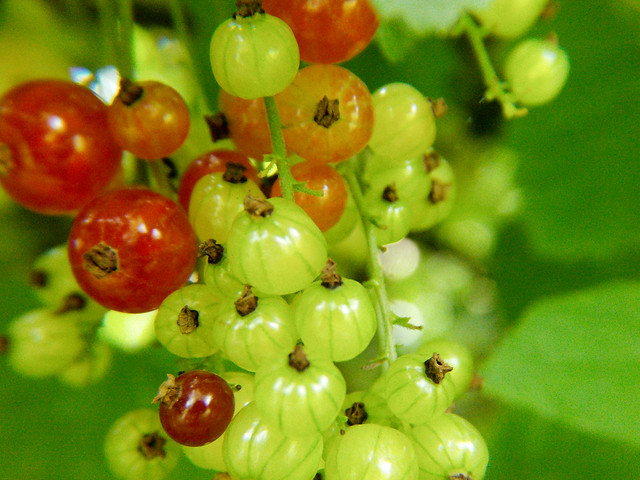
Gooseberries are spiny or prickly shrubs related to currants. Gooseberries grow almost everywhere in Canada except the Far North. At least 12 species, belonging to the Ribes genus, are found. The reddish to dark purple berries are tart and, like their cultivated relatives, are best in jellies and preserves.
Raspberries

Raspberries (Rubus idaeus or R. strigosus) are found in woods and clearings from Newfoundland to British Columbia and in the territories. Wild raspberries were used to develop cultivated varieties. Relatives of raspberry include black raspberry (R. occidentalis), blackcap (R. occidentalis leucodermis), cloudberry (R. chamaemorus), arctic raspberry (R. arcticus), thimbleberry (R. odoratus, R. parviflorus) and salmonberry (R. spectabilis).
Salal

Salal (Gaultheria shallon) is an evergreen shrub, and grows mainly in coastal British Columbia. Salal has clustered, berry-like fruits. When mashed and dried for winter storage, the fruits were, and still are, an important food for Indigenous peoples on BC’s northwest coast. Four other species of Gaultheria grow in Canada.
Saskatoon Berry

The Saskatoon berry (Amelanchier alnifolia) is a deciduous shrub that grows from western Ontario to British Columbia and the Yukon. The city of Saskatoon takes its name from a Cree word for the sweet, fleshy fruits, which were of prime importance to Indigenous peoples and early settlers. On the prairies, saskatoons were an ingredient in pemmican. Some 15 related species, all with edible fruits, grow in Canada.
Strawberries
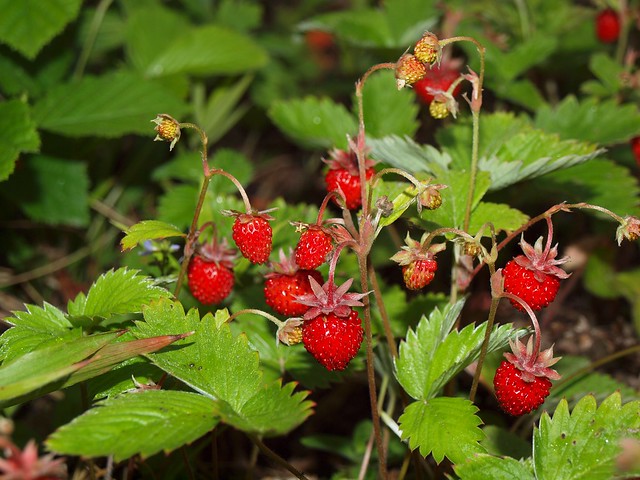
Three species of strawberries (genus Fragaria, family Rosaceae) are native to Canada, growing in woodlands, meadows, clearings and coastlines. All are herbaceous perennials with leaves in three parts. Wild strawberries look a lot like domesticated strawberries, which were derived from two wild species. Despite their softness and small size, their delicate flavour makes wild strawberries a favourite.

 Share on Facebook
Share on Facebook Share on X
Share on X Share by Email
Share by Email Share on Google Classroom
Share on Google Classroom
